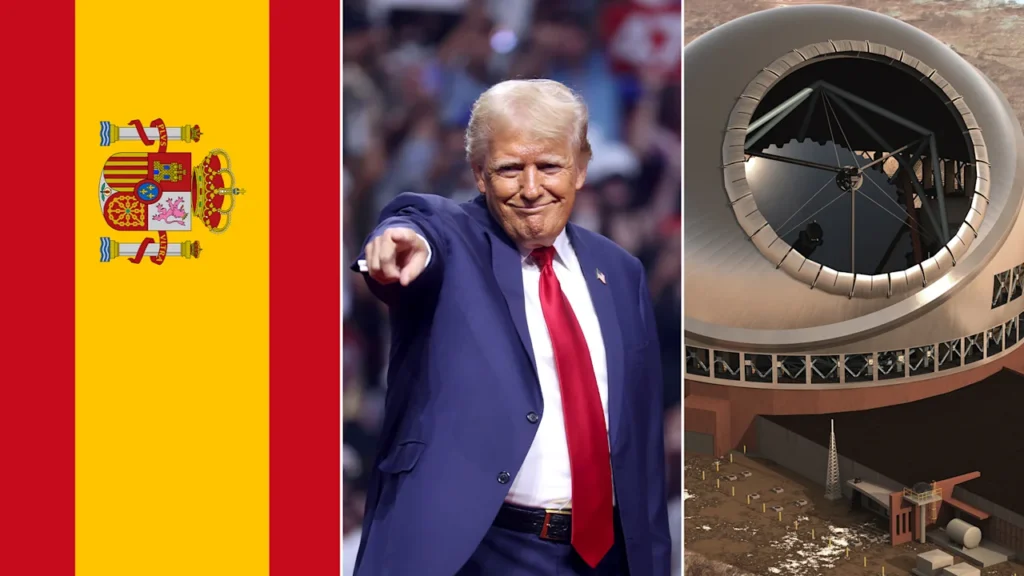
As the U.S. backs away from key climate, aid, and scientific investments, Europe is stepping in to pick up the slack.
Europe’s latest intervention? Saving a plan to build one of the world’s largest, cutting-edge telescopes. This week, the Spanish government offered to pay $470 million to take over one of the most ambitious astronomy projects in history, known as the Thirty Meter Telescope (TMT). In the deal, Spain would also provide the unconstructed mega-telescope a home atop a rugged peak on La Palma, one of the Canary Islands off the coast of Africa.
After massive proposed cuts to the National Science Foundation’s $9 billion budget, the project faced a financing shortfall that likely spelled its doom. Trump’s cuts, detailed in late May, slash the foundation’s budget by more than half, jettisoning funding for the TMT while keeping another $3 billion telescope project, the Giant Magellan Telescope (GMT)—under construction now in Chile—alive.
“Faced with the risk of this major international scientific project being halted, the Government of Spain has decided to act with renewed commitment to science and major scientific infrastructures for the benefit of global knowledge,” said Diana Morant, Spain’s minister of science, innovation, and universities.
When constructed, the telescope will be a modern scientific marvel. Named the Thirty Meter Telescope for the size of its mirror, the project was designed to take on some of astronomy’s most compelling questions, searching the deep skies for signs of extraterrestrial life, evidence of the universe’s origins, and clues about the nature of dark matter. Compared with images from the James Webb Space Telescope, a triumph of engineering itself, the TMT will produce images four times sharper.
A controversial telescope
Pondering the universe’s biggest mysteries is a shared human experience, but the TMT’s journey to investigate them has proven surprisingly divisive.
The plan to build a mega-telescope with a mirror as big as a blue whale began in 2003. The project evolved over time into a consortium of scientists from around the globe, an organization now known as the TMT International Observatory (TIO). The group determined that the ideal site for the massive lens was the summit of Hawaii’s highest peak, Mauna Kea.
While Mauna Kea’s high, dry summit attracts astronomy projects and already hosts 13 other telescopes, the peak’s history as a sacred place in Hawaiian culture prompted a public outcry from residents and conservationists who wanted the TMT built elsewhere. The mountain is known as the home of the god Wākea and plays a central role in native Hawaiian creation stories, a status that inspired a resistance movement against plans to further develop the area.
Though Spain was not the project’s first pick, the country’s offer to host the project is a natural fit. The Spanish island of La Palma was already the telescope’s backup plan and, like Mauna Kea, it offers a remote, high perch with consistently clear skies and infrastructure already in place from other international observatories.
“In 2019, the Government of Spain already expressed its willingness for the TMT to be built on this island, and now, six years later, it is taking a decisive step with a strategic investment that will benefit the European Union, Spain, the Canary Islands, and especially La Palma,” Morant said.
Trump-era cuts to science funding weren’t the first time that the U.S. budget imperiled at least one of the two major next-generation telescopes in the works. With the GMT still on track, its counterpart might have a brighter future under an eager government across the ocean.
“While some countries are cutting science investments and even denying it, Spain is a refuge for science,” Morant said.
